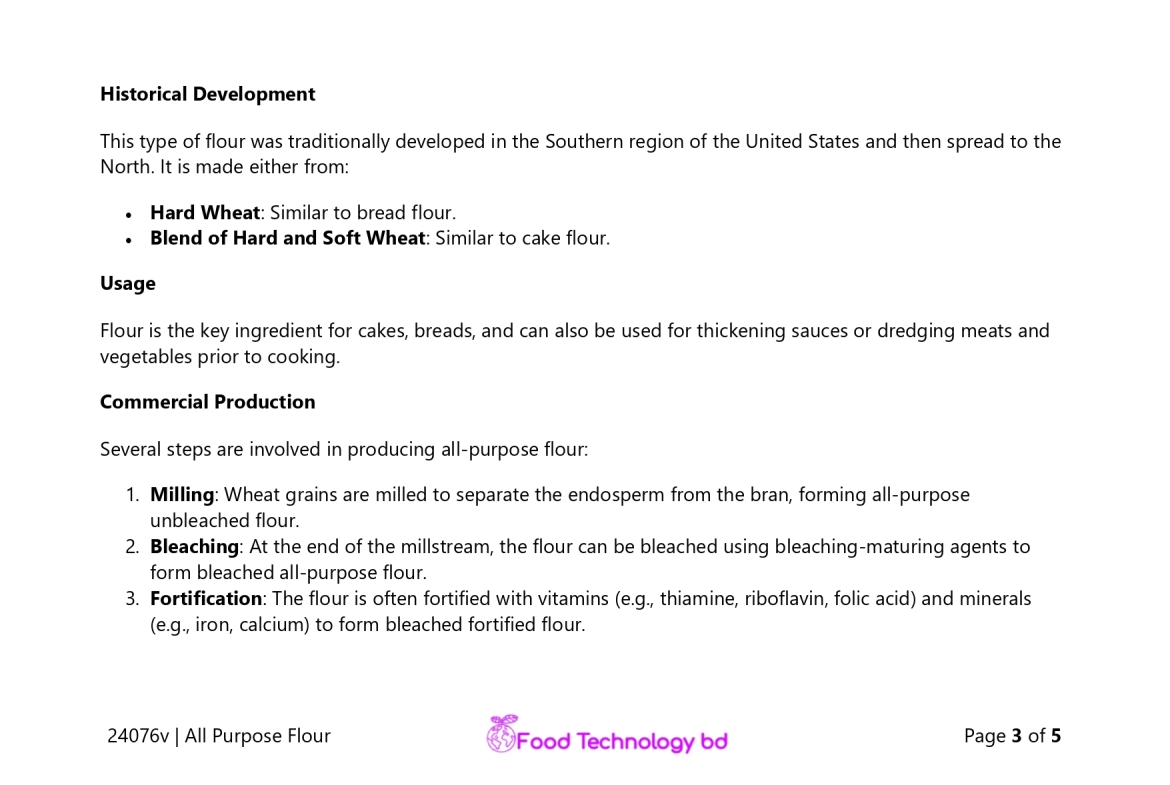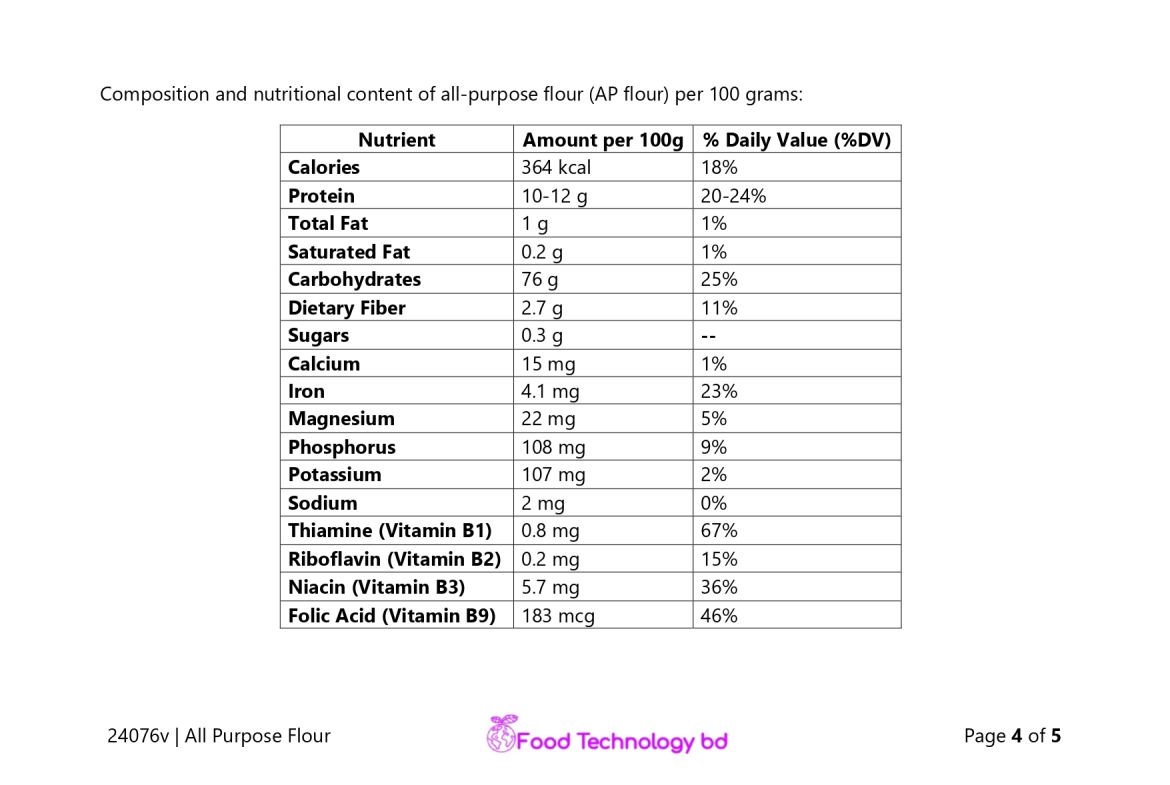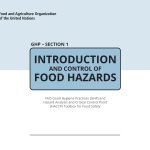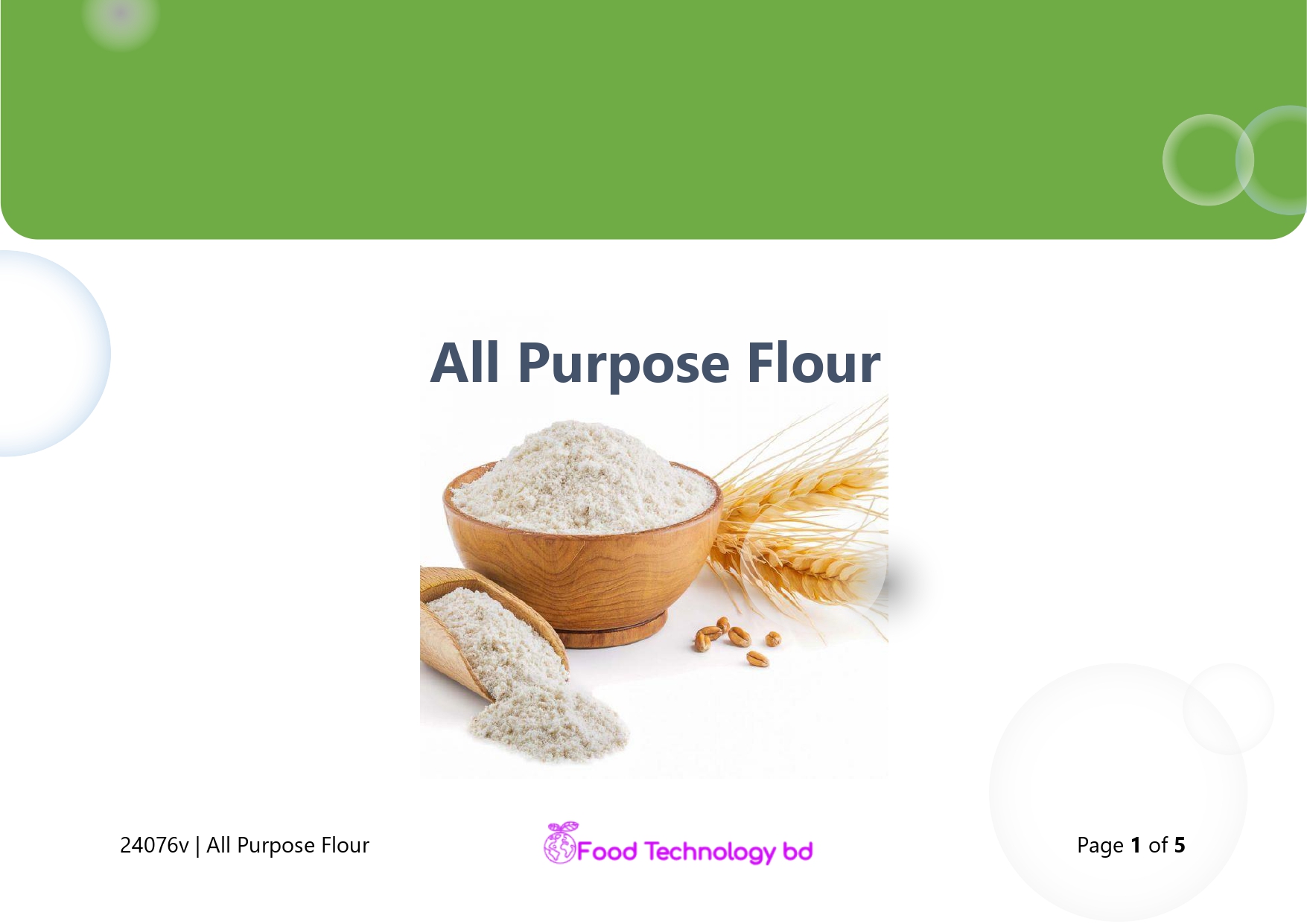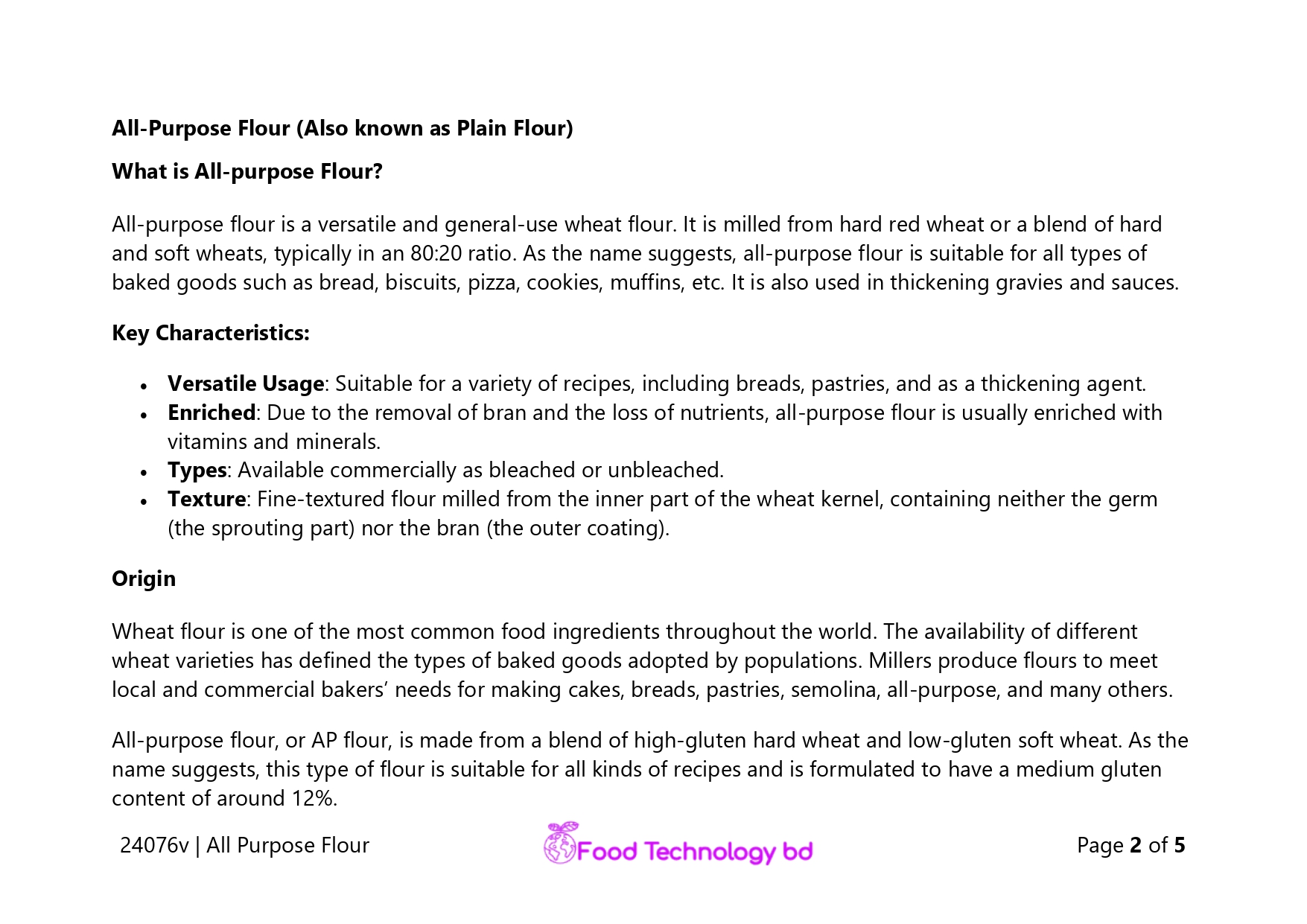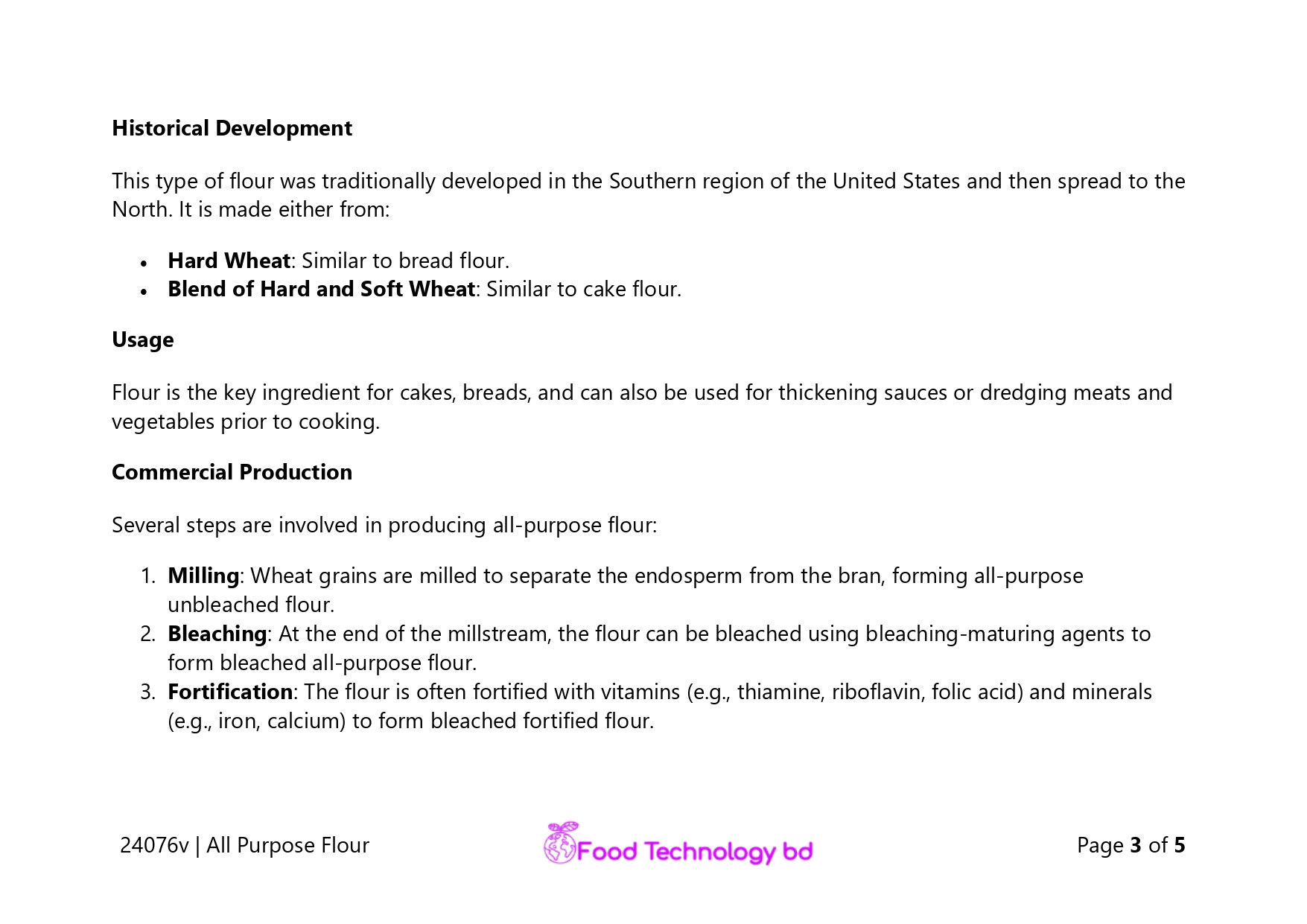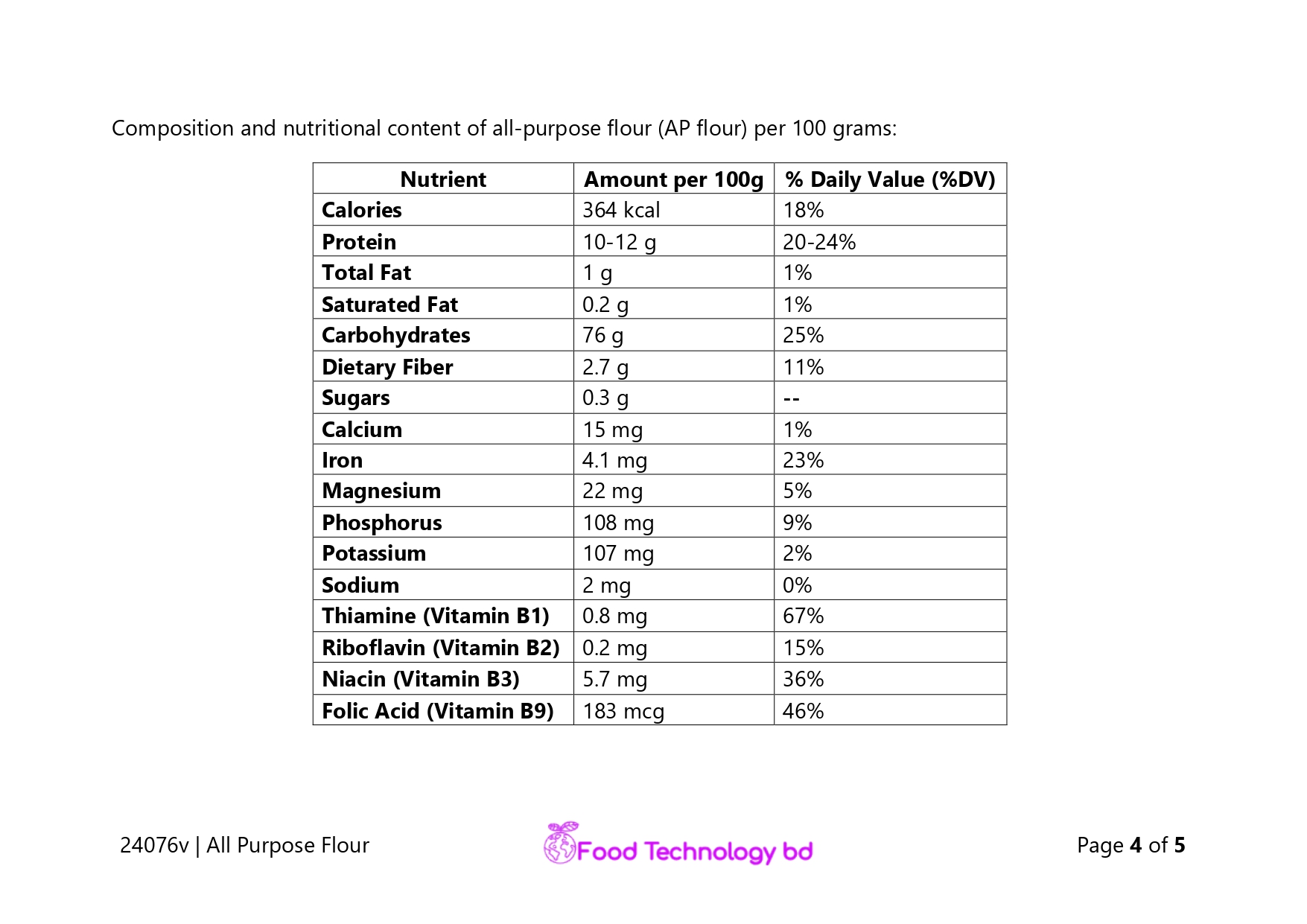Description
All-Purpose Flour (Also known as Plain Flour)
What is All-purpose Flour?
All-purpose flour is a versatile and general-use wheat flour. It is milled from hard red wheat or a blend of hard and soft wheats, typically in an 80:20 ratio. As the name suggests, all-purpose flour is suitable for all types of baked goods such as bread, biscuits, pizza, cookies, muffins, etc. It is also used in thickening gravies and sauces.
Key Characteristics:
- Versatile Usage: Suitable for a variety of recipes, including breads, pastries, and as a thickening agent.
- Enriched: Due to the removal of bran and the loss of nutrients, all-purpose flour is usually enriched with vitamins and minerals.
- Types: Available commercially as bleached or unbleached.
- Texture: Fine-textured flour milled from the inner part of the wheat kernel, containing neither the germ (the sprouting part) nor the bran (the outer coating).
Origin
Wheat flour is one of the most common food ingredients throughout the world. The availability of different wheat varieties has defined the types of baked goods adopted by populations. Millers produce flours to meet local and commercial bakers’ needs for making cakes, breads, pastries, semolina, all-purpose, and many others.
All-purpose flour, or AP flour, is made from a blend of high-gluten hard wheat and low-gluten soft wheat. As the name suggests, this type of flour is suitable for all kinds of recipes and is formulated to have a medium gluten content of around 12%.
Historical Development
This type of flour was traditionally developed in the Southern region of the United States and then spread to the North. It is made either from:
- Hard Wheat: Similar to bread flour.
- Blend of Hard and Soft Wheat: Similar to cake flour.
Usage
Flour is the key ingredient for cakes, breads, and can also be used for thickening sauces or dredging meats and vegetables prior to cooking.
Commercial Production
Several steps are involved in producing all-purpose flour:
- Milling: Wheat grains are milled to separate the endosperm from the bran, forming all-purpose unbleached flour.
- Bleaching: At the end of the millstream, the flour can be bleached using bleaching-maturing agents to form bleached all-purpose flour.
- Fortification: The flour is often fortified with vitamins (e.g., thiamine, riboflavin, folic acid) and minerals (e.g., iron, calcium) to form bleached fortified flour.
Composition and nutritional content of all-purpose flour (AP flour) per 100 grams:
| Nutrient | Amount per 100g | % Daily Value (%DV) |
| Calories | 364 kcal | 18% |
| Protein | 10-12 g | 20-24% |
| Total Fat | 1 g | 1% |
| Saturated Fat | 0.2 g | 1% |
| Carbohydrates | 76 g | 25% |
| Dietary Fiber | 2.7 g | 11% |
| Sugars | 0.3 g | — |
| Calcium | 15 mg | 1% |
| Iron | 4.1 mg | 23% |
| Magnesium | 22 mg | 5% |
| Phosphorus | 108 mg | 9% |
| Potassium | 107 mg | 2% |
| Sodium | 2 mg | 0% |
| Thiamine (Vitamin B1) | 0.8 mg | 67% |
| Riboflavin (Vitamin B2) | 0.2 mg | 15% |
| Niacin (Vitamin B3) | 5.7 mg | 36% |
| Folic Acid (Vitamin B9) | 183 mcg | 46% |



